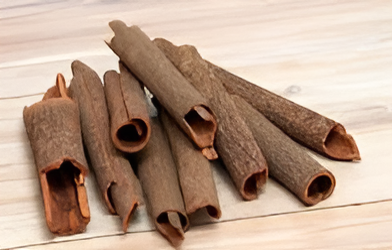
Cinnamon: The Spiced Wonder
Cinnamon is one of the oldest and most cherished spices in the world, renowned for its distinctive flavor, rich aroma, and numerous health benefits. This aromatic spice, derived from the inner bark of trees belonging to the Cinnamomum genus, has been used for thousands of years in culinary and medicinal practices.
A Brief History of Cinnamon
Cinnamon’s history dates back to ancient civilizations. The Egyptians used it in embalming processes, while the Romans considered it a valuable commodity, often equating its worth with that of gold. During the Middle Ages, it was a symbol of luxury and was traded extensively across Europe and Asia. The spice played a significant role in exploration, with many explorers seeking new routes to access this coveted ingredient.
Types of Cinnamon
There are two primary types of cinnamon: Ceylon cinnamon (Cinnamomum verum) and Cassia cinnamon (Cinnamomum cassia).
- Ceylon Cinnamon: Often referred to as “true cinnamon,” it has a sweeter and more delicate flavor. It has a softer feel and is lighter in color. Ceylon cinnamon is primarily grown in Sri Lanka and is considered superior in quality.
- Cassia Cinnamon: More commonly found in grocery stores, Cassia cinnamon has a stronger, more pungent flavor and is darker in color. It is less expensive than Ceylon cinnamon but contains higher levels of coumarin, a compound that can be harmful in large quantities.
Culinary Uses of Cinnamon
Cinnamon is incredibly versatile and can enhance a wide variety of dishes. Here are some popular culinary uses:
- Baking: Cinnamon is a staple in baked goods, from cinnamon rolls and apple pies to cookies and cakes. Its warm flavor pairs well with sweet ingredients.
- Beverages: Many people enjoy cinnamon in hot drinks. It’s a key ingredient in chai tea, hot chocolate, and even coffee, adding depth and warmth.
- Savory Dishes: In some cuisines, such as Middle Eastern and Indian, cinnamon is used in savory dishes, like stews and curries, contributing to complex flavor profiles.
- Breakfast Foods: Sprinkling cinnamon on oatmeal, yogurt, or pancakes is a delicious way to start the day.
- Preservation: Historically, cinnamon has been used for its antibacterial properties, making it useful in preserving foods.
Health Benefits of Cinnamon
Cinnamon is not just a flavorful spice; it also boasts numerous health benefits:
- Antioxidant Properties:Packed with antioxidants, cinnamon helps the body fight oxidative stress and lower inflammation.
- Blood Sugar Regulation: Studies have shown that cinnamon can improve insulin sensitivity and lower blood sugar levels, making it beneficial for people with type 2 diabetes.
- Heart Health: Regular consumption of cinnamon may reduce risk factors for heart disease, such as cholesterol levels and blood pressure.
- Antimicrobial Effects: The compounds in cinnamon have been shown to fight bacteria and fungi, making it effective in promoting oral health and preventing infections.
- Brain Function: Some research suggests that cinnamon may have neuroprotective properties, potentially reducing the risk of neurodegenerative diseases.
How to Include Cinnamon in Your Everyday Food
Incorporating cinnamon into your daily routine can be simple and delicious. Here are some tips:
- Sprinkle it on your morning oatmeal or cereal for added flavor and health benefits.
- Add it to smoothies for a warm twist.
- Use it in savory dishes like chili or curry to introduce a unique flavor.
- Mix it into homemade energy bars or snacks for an extra boost.
- Infuse it into beverages, like herbal teas or milk, for a cozy treat.
Cinnamon in Traditional Medicine
In traditional medicine systems, such as Ayurveda and Traditional Chinese Medicine, cinnamon has been used for its warming properties and to aid digestion. It is often recommended for alleviating digestive issues, reducing nausea, and even promoting menstrual health.
Choosing and Storing Cinnamon
When selecting cinnamon, opt for Ceylon cinnamon for its superior taste and lower coumarin content. Look for whole sticks or ground cinnamon that is labeled as “Ceylon” to ensure quality.
To store cinnamon, keep it in an airtight container in a cool, dark place. Whole sticks can last up to four years, while ground cinnamon should be used within six months to a year for optimal flavor.
Conclusion
Cinnamon is more than just a spice; it is a culinary treasure with a rich history and a plethora of health benefits. Whether you enjoy it in sweet or savory dishes, its versatility makes it a staple in kitchens around the world. From enhancing the flavors of your favorite foods to contributing to your overall health, cinnamon deserves a prominent place in your pantry.
As you explore the many uses of cinnamon, consider its potential to elevate your culinary creations and support your well-being. Embrace this ancient spice and discover the warmth and flavor it brings to your life.